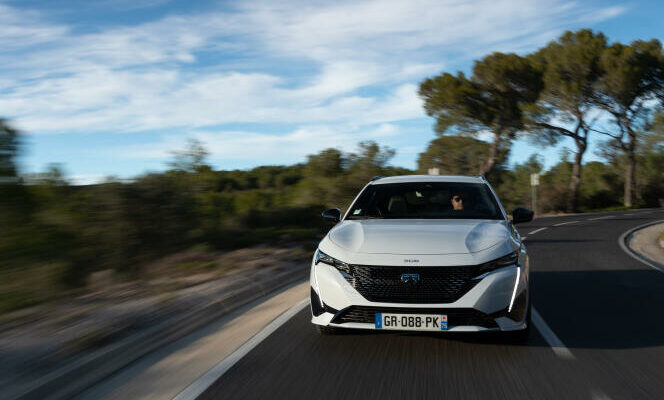Stellantis is one of the rare automobile groups to have not developed any exclusively electric model. At Peugeot, as at Citroën, Opel, Fiat or DS – to mention only the house’s European brands – we install batteries and a magnet motor in place of a thermal block in an already existing vehicle. An approach that other manufacturers practice, but in a less systematic manner.
Also designed from the EMP2 “multi-energy” platform, the new generation of the 308 is marketed with an NMC (nickel-manganese-cobalt) battery whose capacity has been increased to 51 kilowatt hours (kWh) for a announced autonomy of 410 kilometers. Called e-308, this version seems to reach the limits of the pragmatic vision of the electric car developed by Stellantis.
The idea of a range without a specifically electric car – contrary to the strategy of Renault, Volkswagen, Toyota or Ford, which use a specific platform – is a legacy of the pre-Stellantis past. This automobile group was formed, in 2021, by the marriage concluded between the French PSA, which had not seen fit (and undoubtedly had little means) to bet on the rise of electric, and the Italian-American Fiat Chrysler Automobiles (FCA), handicapped by chronic underinvestment.
From 43,900 euros
Stellantis was thus able to quickly and at much lower cost build up a range of models which enabled it to comply with European CO emissions standards.2. With the arrival of the e-308, while awaiting that of the e-3008, Peugeot claims “the widest electric range among European manufacturers”. With significant commercial results, even if they are largely attributable to the e-208, the most widely sold electric urban car in Europe, a segment where competition is not yet very keen.
At Peugeot, we are pleased to be able to offer a complete choice around the 308, available with purely thermal engines (petrol or diesel), hybrid (rechargeable and micro-hybrid) or electric. The e-308, derived from a model which has largely proven itself, presents practically no distinctive external signs. Extremely rare among electric vehicles, it has a station wagon variant (called “SW” for “station wagon”) offered at the same price (from 43,900 euros) as the sedan. A price that we would describe as uninhibited, despite some recent downward adjustments, given the pedigree of this model.
You have 45% of this article left to read. The rest is reserved for subscribers.
